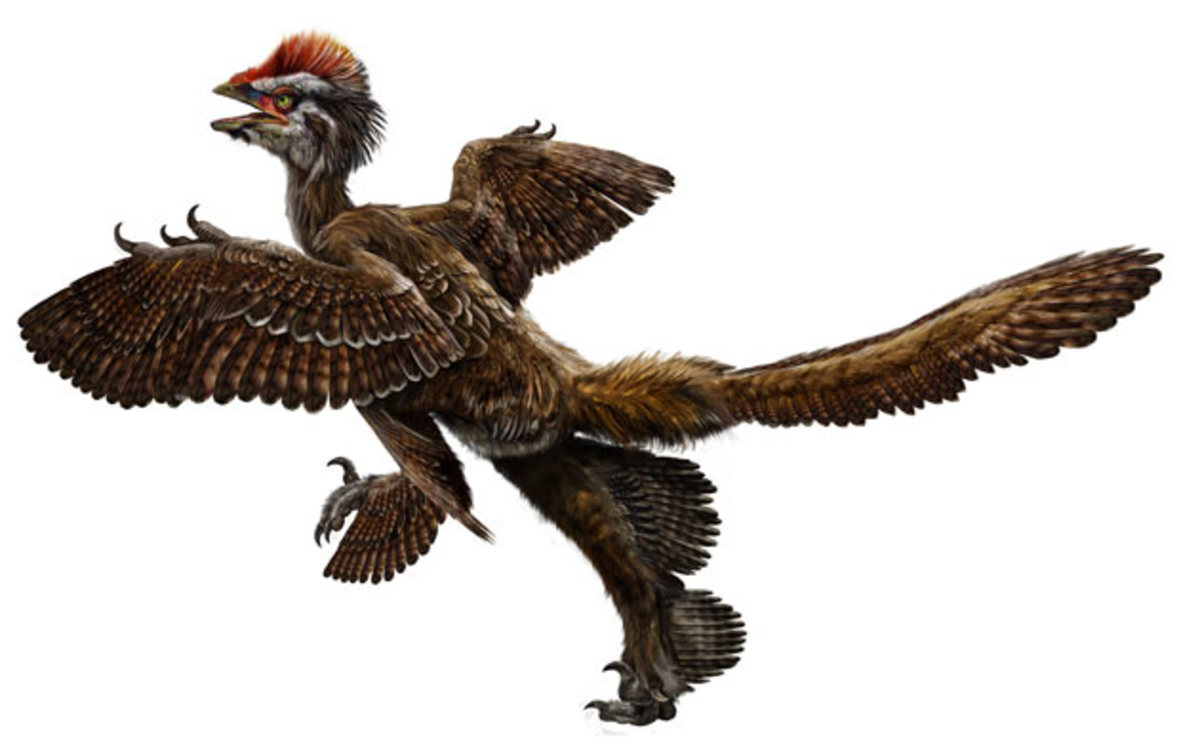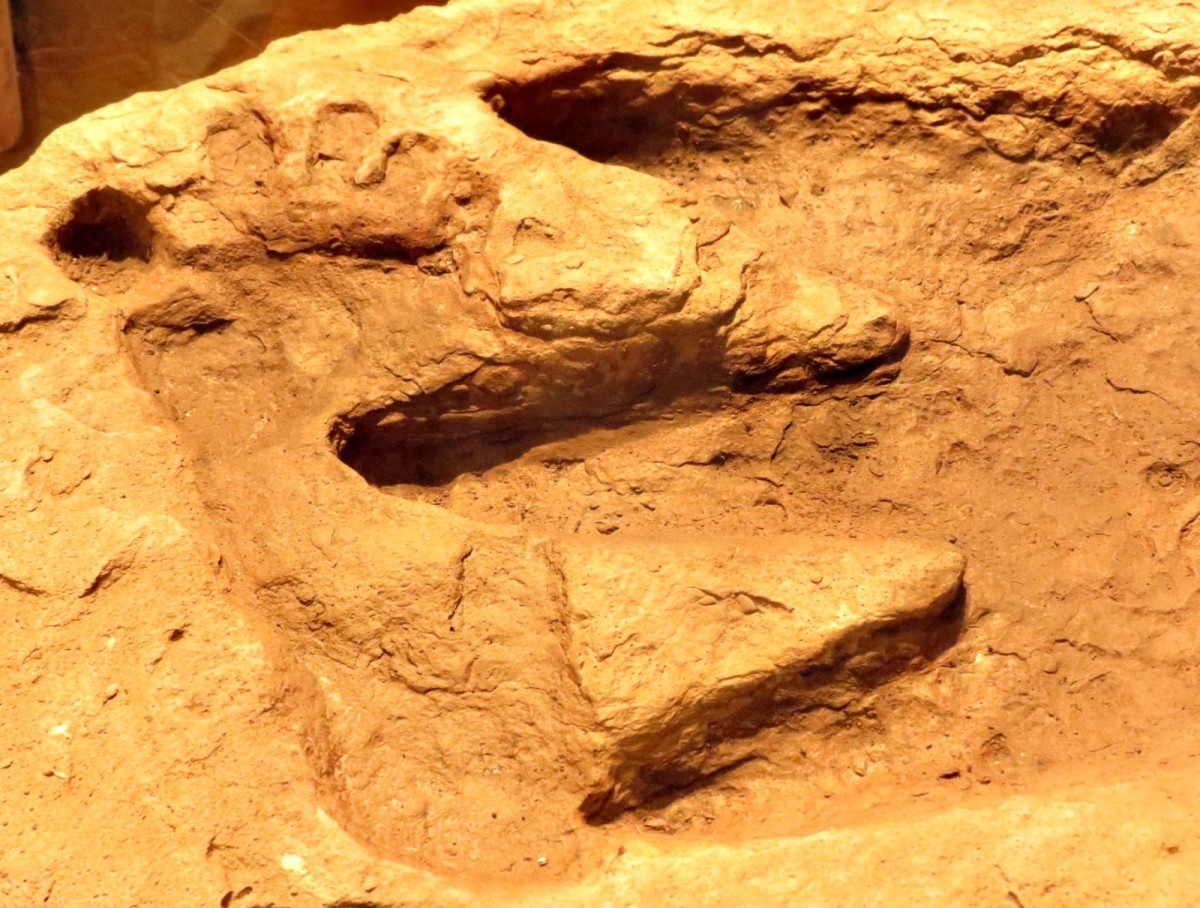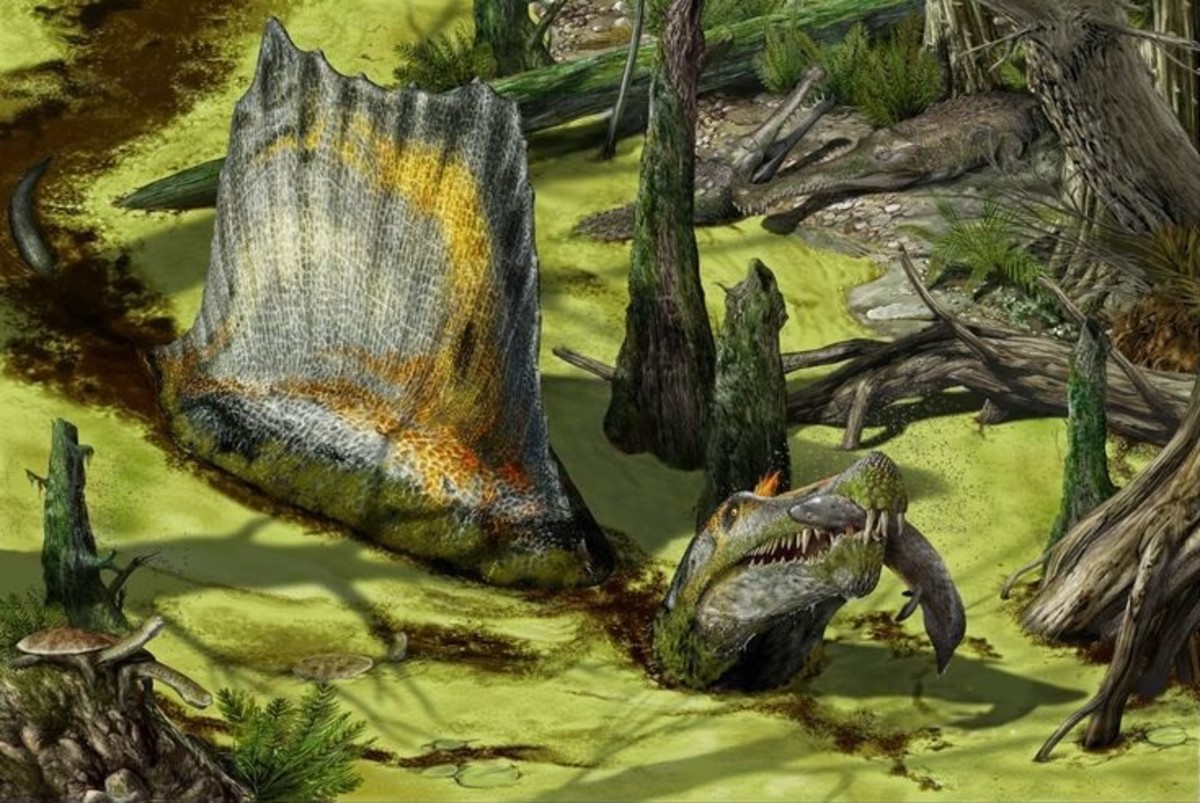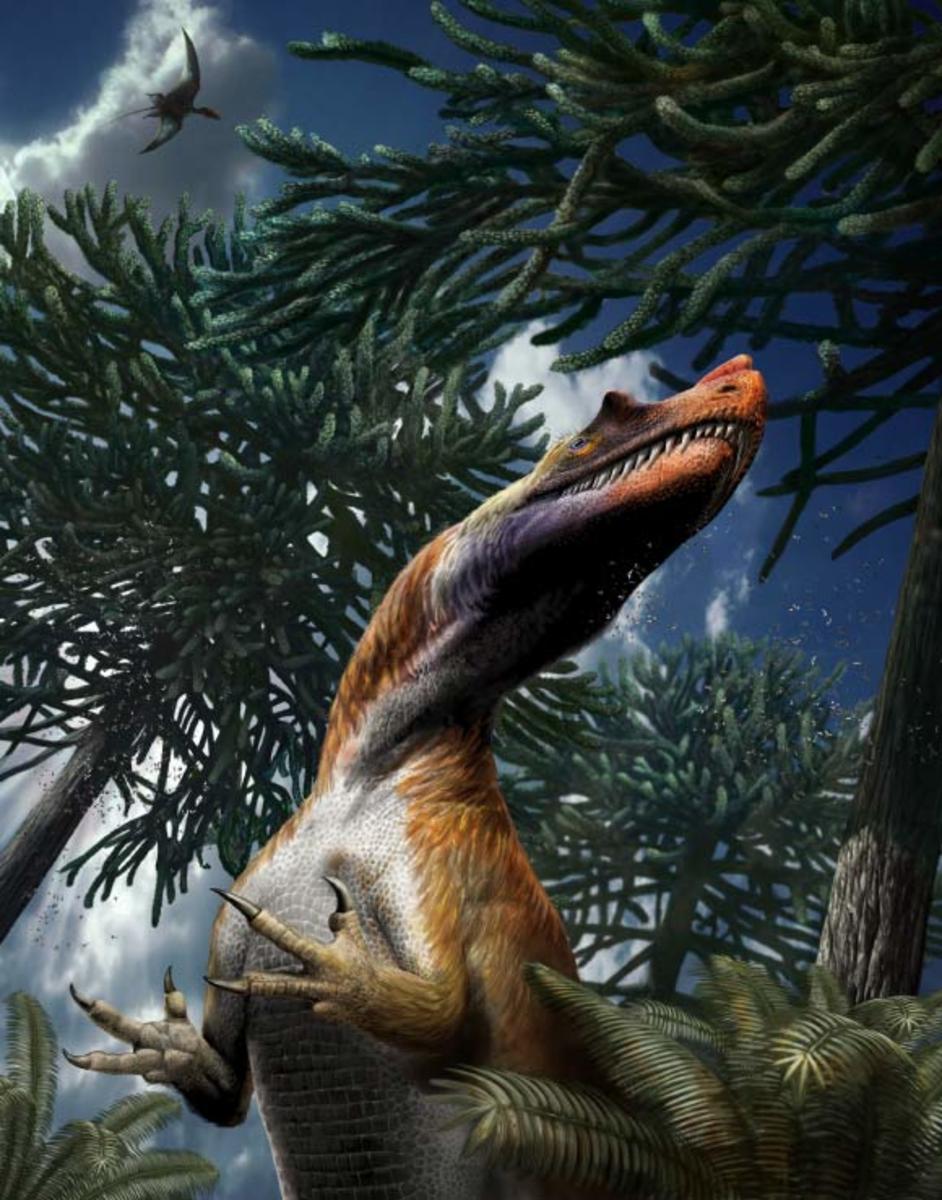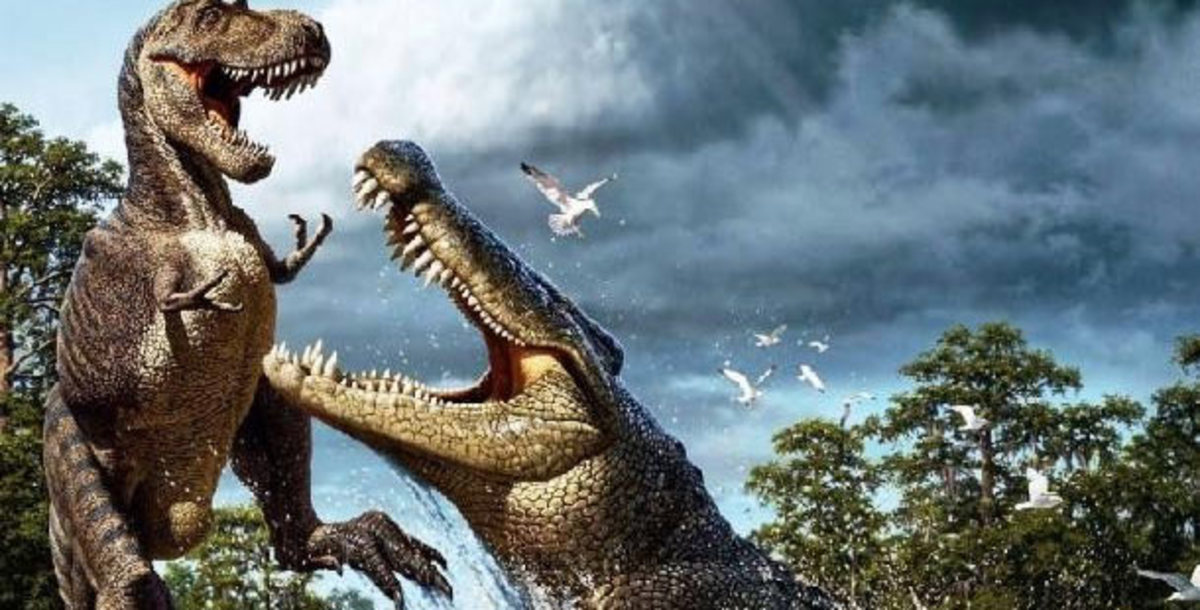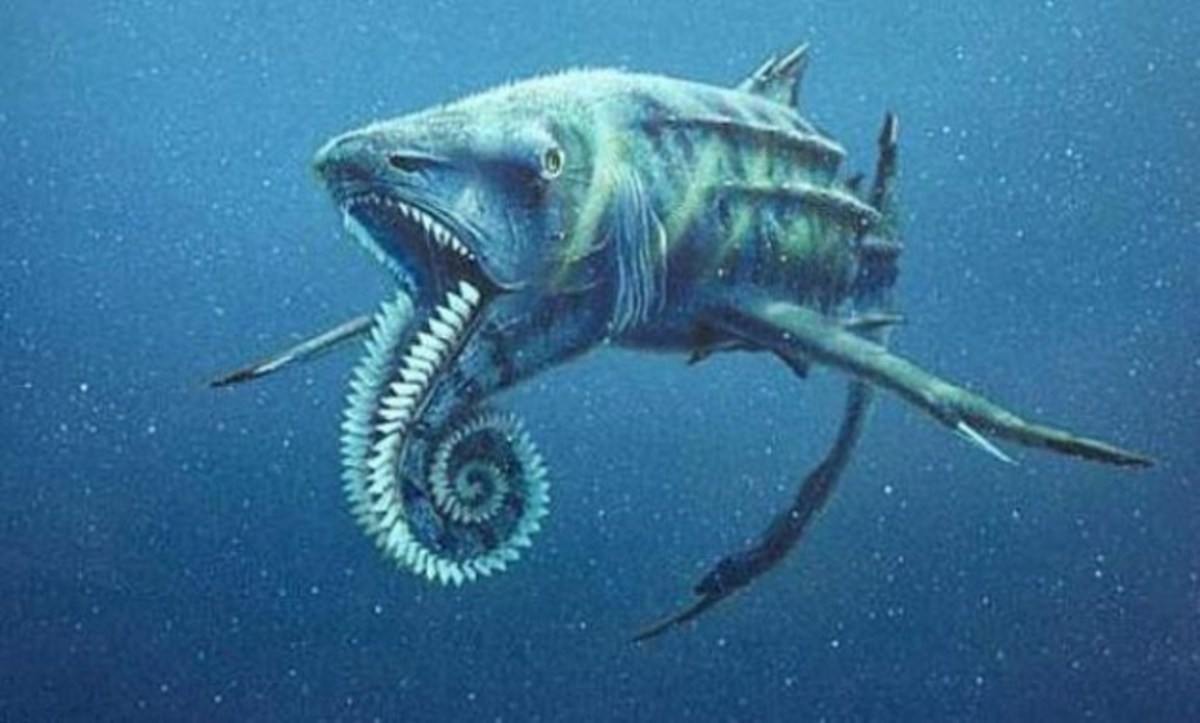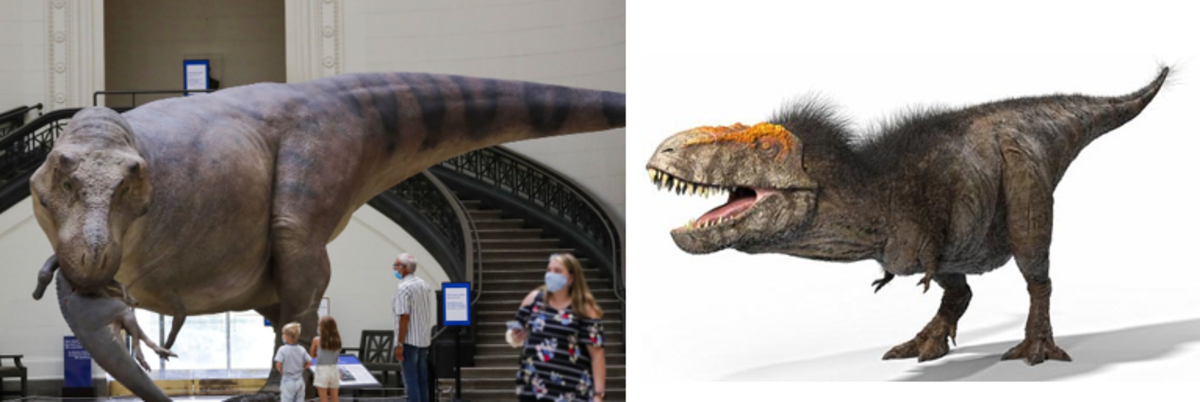- HubPages»
- Education and Science»
- Life Sciences»
- Paleontology»
- Prehistoric Life
Stegosaurus
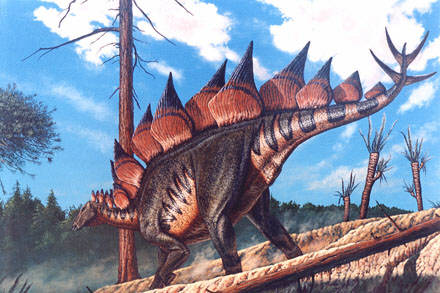
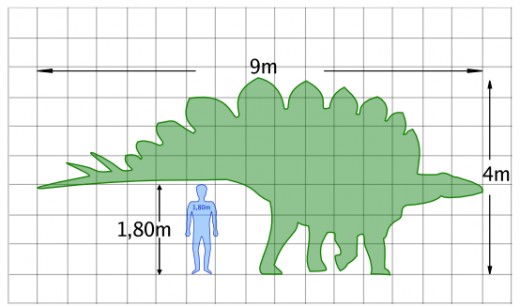
Living in the late Jurassic period 150 million years ago in what is now western North America, Stegosaurus is probably one of the most recognizable dinosaurs. Stegosaurus, was one of the many dinosaurs first discovered and described during the Bone Wars, which was a period of intense fossil speculation and discovery during the Gilded Age of American history. Stegosaurus was originally named by Othniel Charles Marsh in 1877, from remains recovered north of Morrison, Colorado. It's name means "roof lizard". A discovery in Portugal in 2006, revealed a European population of Stegosaurs as well. The most recognizable feature of Stegosaurus and it's relatives were the double row of alternating plates that ran along it's back, and it's tail, ending in four four foot long lethal spikes called a Thagomizer. Stegosaurus stood about 14 feet tall, measured 30 feet from nose to tail tip, and weighed 4-5 tons. It was a herbivore and must have spent a majority of it's time eating plants such as mosses, horsetails, ferns, cycads and conifers.
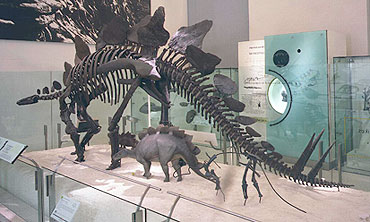
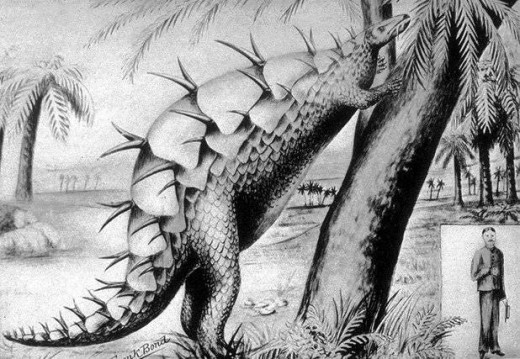
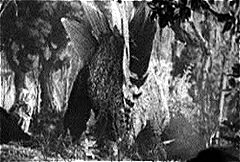
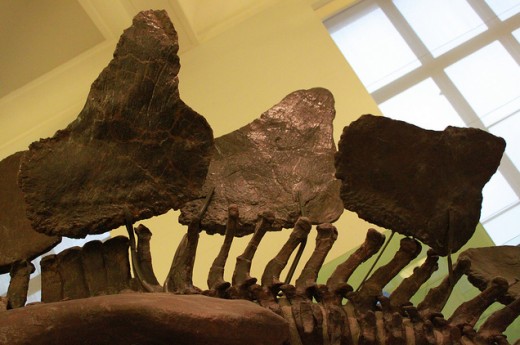
Plates
Stegosaurus had 17 bony leaf-shaped plates running along it's back called osteoderms, which are bony plates in the skin similar to those seen in crocodiles and many lizards in the present. They were not directly connected to the animal's skeleton, instead they grew out from the skin. The largest plates were located above the Stegosaurus' hips and measured 2 feet wide and 2 feet tall. By comparison the smallest plates located by above the neck, would have only been 4 inches tall and 3-4 inches wide
Over the years there has been much debate regarding Stegosaurus' plates and how they were laid out. It is considered one of the most discussed in the history of fossil reconstruction. Four conceivable plate configurations have been suggested over the years:
The plates lying flat along the back, like shingles on a roof. This was Marsh's original conception, which led to the name "Roof Lizard". When paleontologists discovered more complete plates were, their shape provided evidence that they would have stood on edge, instead of lying in a flattened shingle like fashion.
By 1891, Marsh published a more recognizable version of Stegosaurus, with a single row of plates. This was rejected because it was not completely understood that the plates were connected and it was thought that they would overlap excessively in this arrangement. It was re-imagined, by artist Stephen Czerkas in the 1980s based on the dorsal spines of modern day lizards.
The plates paired in a double row that ran evenly along the back. This is probably the most widely seen depiction in scientific books and pictures, specifically in earlier publications. The 1933 film King Kong featured a Stegosaurus with this even double row. This version persisted up until the "Dinosaur Renaissance" of the 1960s and 70s. By then new generations of paleontologists started looking at dinosaurs in a new light.
Two rows of plates alternated in alignment. By the 1960s, this had become, and still remains the form most paleontologists agree on. This is because the one Stegosaurus stenops fossil with the plates still intact illustrates this arrangement. It is interesting to note that if this was indeed the arrangement of the plates, then it would be unique in the animal kingdom to Stegosaurus and it's relatives.
In the past two decades, some palaeontologists, most notably Robert Bakker, have theorized the plates may have moved to some degree. Bakker speculated that the plates were the bony cores of pointed horned plates that a Stegosaurus could flip from side to side in order to discourage a predator like Allosaurus from attacking. It has also been observed that Stegosaurus' plates had blood vessels running through grooves. It has been suggested that the animal could have flushed blood into the plates in order to make it appear more menacing to any would be predator. These blood vessels could have also acted as a temperature regulation system helping the animal absorb and release heat. It has also been suggested that the plates served as a sexual display, despite the fact that both males and females seemed to have had them.
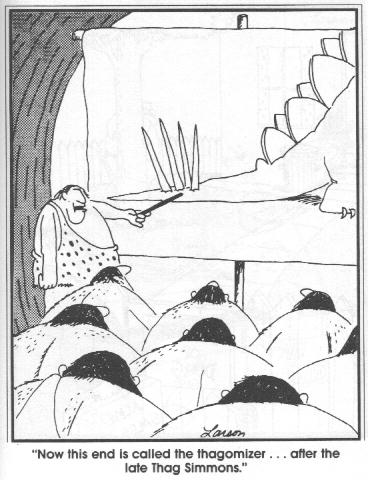
A Stegosaurus vs an Ceratosaurus.
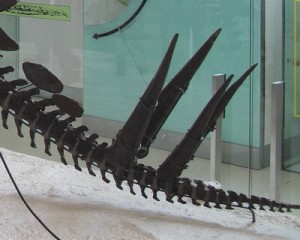
Thagomizer
The term "thagomizer" was coined by Gary Larson in a 1982 Far Side comic strip, where a group of "college student" cavemen are being taught about "the late Thag Simmons." The tail spikes are referred to as the "thagomizer," suggesting that Thag met his untimely demise at the tail end of a Stegosaurus. In reality the spikes were designed as anti-predator defense weapons. They were 4 feet long and extremely sharp. Some species of Stegosaurus had eight spikes. Stegosaurus ungulatis had eight spikes while Stegosaurus stenops only had four. Robert Bakker observed that the stegosaurus tail was highly flexible more so than other dinosaurs because it had no ossified tendons. This evidence implies that the tail was indeed used as a weapon. He also noted that Stegosaurus could have maneuvered its rear easily during combat, by keeping its longer heavily built hind-limbs still, it could then push off with its shorter but very powerfully muscled forelimbs enabling it to spin around and face it's attacker with the business end, it's tail. Fossil evidence shows that many Allosaurs and Ceratosaurs fell victim to these deadly weapons. One Allosaurus skeleton was discovered with a punctured vertebra to which a stegosaur tail spike fits rather well. Even with all these defenses, Stegosaurus was not always the winner of such altercations. One Stegosaurus neck plate was discovered with a U-shaped wound that fit an Allosaurus jaw perfectly.
Stegosaurus facts
- Stegosaurus - Dinosaur - Enchanted Learning Software
Stegosaurus was a large herbivore from the Jurassic Period. It had a plated back and a spiked tail. Stegosaurus measured up to 26-30 feet long (8-9 m), about 9 feet tall (2.75 m), and weighed about 1-2 tons, but its small brain was the size of a waln
Stegosaurus Dinosaurs, life cycle, relatives, history,
- Stegosaurus Dinosaurs, life cycle, relatives, history, scientific name, evolution, story, characteri
Stegosaurus was a species of large herbivorous dinosaurs from the Upper Jurassic of North America. It is in the middle of the most easily identifiable dinosaurs, due to the characteristic double row of kite-shaped plates along the animal's back and t
10 Facts About Stegosaurus
- 10 Facts About Stegosaurus - Stegosaurus Facts
Stegosaurus is one of the most familiar dinosaurs of the Cretaceous period, but how much do you really know about this plated reptile? Here are 10 facts you may or may not have known about Stegosaurus.


